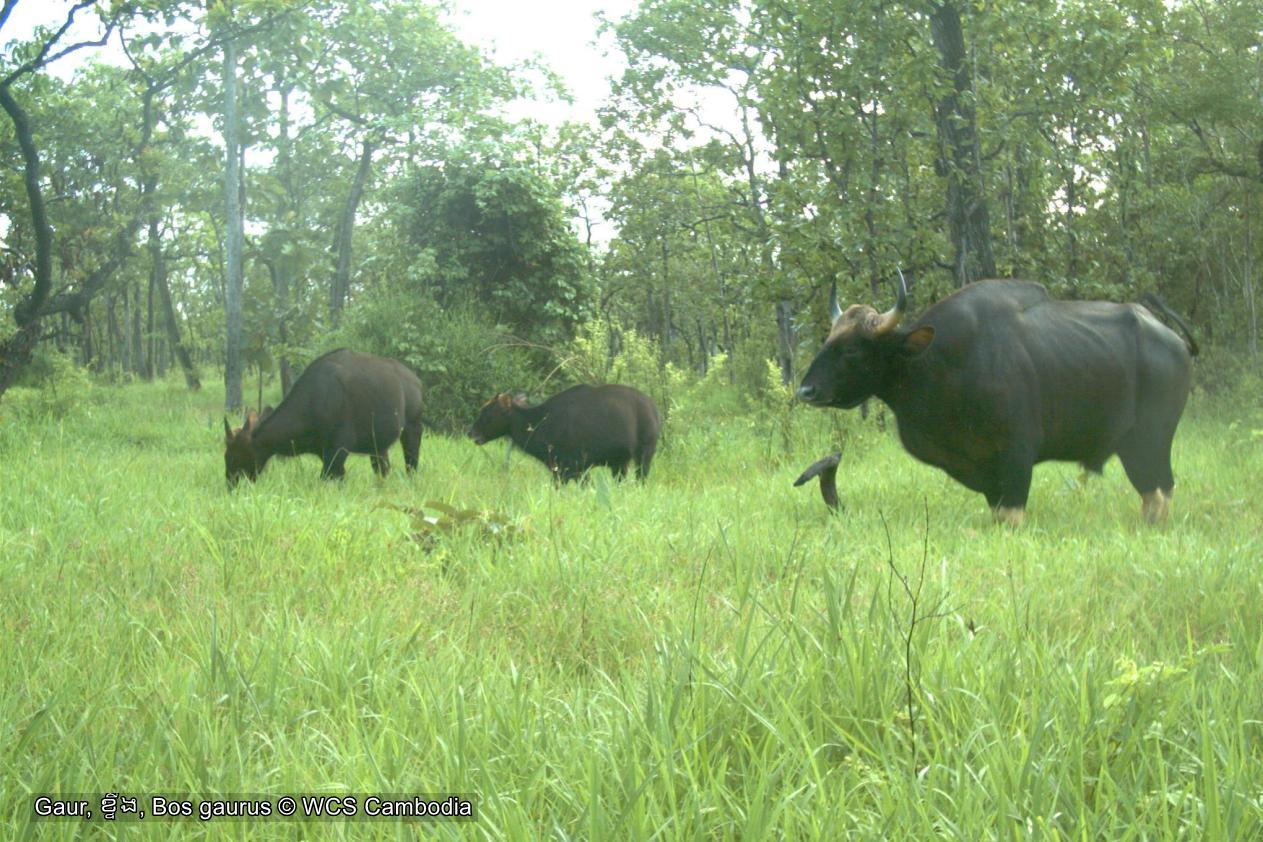 Gaur are the largest cattle species in the world and one of the largest living land mammals. Due to their impressive size, gaur have few natural predators; only tigers have been known to kill healthy adult animals. Gaur are found in forested areas across South and Southeast Asia, however their distribution has shrunk by over 80% in the last 100 years. The global population of gaur decreased by 90% in the last half of the 20th century. It is listed on the IUCN Red List of Threatened Species as Vulnerable.
Gaur are the largest cattle species in the world and one of the largest living land mammals. Due to their impressive size, gaur have few natural predators; only tigers have been known to kill healthy adult animals. Gaur are found in forested areas across South and Southeast Asia, however their distribution has shrunk by over 80% in the last 100 years. The global population of gaur decreased by 90% in the last half of the 20th century. It is listed on the IUCN Red List of Threatened Species as Vulnerable.
Gaur are threatened across their range by habitat loss and hunting for horns, meat and trophies, and disease spread from domestic cattle.
In Cambodia, gaur remain mostly found in the Eastern Plains Landscape, in evergreen and semi-evergreen forests. No national Cambodian population estimate is available for gaur, but we believe the population is now very small and decreasing. Gaur need large areas to graze for food (one herd of gaur can range over 150 km2), but much of gaur natural habitats are being fragmented year by year. For example, the number of gaur in Keo Seima Wildlife Sanctuary has decreased from 498 individuals in 2010 to almost none in 2020.
By identifying and understanding the threats gaur face, WCS is able to perform efficient and customized conservation action. The efforts of our law enforcement teams, biodiversity monitoring teams and community support teams culminate in a successful conservation action plan. This plan includes activities such as anti-hunting law enforcement patrols, educational program, and anti-snaring patrols, which are all carried out simultaneously.
Gaur is classified as “rare” wildlife in Prakas No. 020 of the Ministry of Agriculture, Forestry and Fishery. According to Cambodia Protected Area Law, Article 56 and 61: 3rd grade natural resource offense, those who committed wildlife offences such as catching, trapping, hunting, causing injury, poisoning, killing, taking out, collecting eggs and offspring from their original habitats of any vulnerable, rare, or critically endangered wildlife species shall carry a penalty of 1 – 5 years imprisonment and/or a fine from 15,000,000 riels (about $4,000) to 150,000,000 riels (about $40,000).